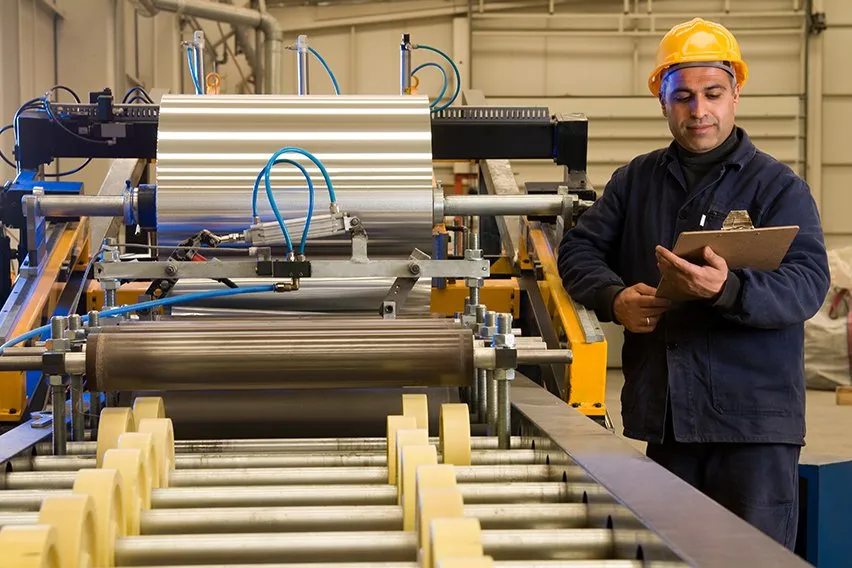Discrete Manufacturing vs. Process Manufacturing – What’s the Difference?

In general, there are two types of manufacturing: discrete manufacturing and process manufacturing. Neither one is better than the other. In fact, manufacturers don’t have a choice. The production method is dictated by the type of product being produced.
That said, there are important distinctions between the two techniques. These differences affect how you run your business. For example, there are serious implications for supply chain management. So if you’re thinking of producing any physical products, it’s important to understand the process.
It’s equally important if you’re outsourcing production to another firm. Ultimately, you still want insight into how your stuff is being made. This can help you understand production financials, and even identify inefficiencies. Let’s dig in, and learn the difference between these two production methods.
Here’s What We’ll Cover:
Discrete Manufacturing Basics
Discrete manufacturing companies produce products that you can count individually. Discrete manufacturing examples are all around you. In fact, the screen you’re reading this article on is an example of discrete manufacturing. Other examples include cars, beer cans, and padlocks.
You can measure all of these products in terms of “how many?” When Ford announces their vehicle production numbers, they don’t provide the number in tons of steel. They tell you how many F-150s they sold.
Discretely manufactured finished products often include multiple discretely manufactured parts. Take a laptop, for example. It consists of a case, a screen, a motherboard, a processor, and so on. You can disassemble it into all of those constituent components.

That’s not universally true. A laptop case itself, for example, is often made from injection-molded plastic. That plastic is the result of process manufacturing, which we’ll discuss in the next section.
The primary challenge for a discrete manufacturer is its complex bill of materials. Our hypothetical laptop manufacturer, for example, needs to source multiple parts. These parts may come from multiple suppliers. If there’s a shortage of one part, the entire assembly line grinds to a halt.
A discrete manufacturer also requires a lot of space. Parts need to be stored and delivered along the assembly line to ensure smooth operation. Increasing capacity can also be difficult, even with machines organized into cells. If the cell for one part is at capacity, you may need a whole new assembly line.
Process Manufacturing Basics
Process manufacturing, sometimes called continuous-flow manufacturing, produces individual products. These are measured in terms of “how much?” The manufacturing process typically involves mixing raw materials or ingredients. Manufacturers use a formula to ensure consistency.
Examples of these types of products include chemicals, refineries, and breweries. So a can of beer is discretely manufactured, but the beer inside the can is the result of process manufacturing.
It’s important to note that a manufacturing business can use both methods. For example, many pharmaceutical companies produce their own chemicals via process manufacturing. Those chemicals are then put into individual pills, which the companies package and sell as discrete units.
What They Have in Common
So, what do these two methods have in common? Ultimately, they share the same goal, which is to produce more products faster, and at higher quality. Metrics are easy to track. You look at how much the factory can produce, and how much of that product meets quality control standards. These numbers – often called capacity and yield – are the gold standard for any manufacturer.

But product quality and quantity are only part of the equation. For a company to remain profitable, there must be a constant flow of parts and ingredients. This is true whether you’re making quantities of material or a distinct unit.
Good production planning also includes keeping scrap to a minimum, and keeping track of any bottlenecks. And for senior management, it means ensuring a constant cash flow. If orders get too far ahead of payments, you might find yourself unable to pay for raw materials. As a result, accounting is as essential to productivity as the production process itself.
Key Takeaways
Whether you’re trying to maximize the quantity or increase unit production, both manufacturing methods have a lot in common. Materials management, accounting, and cost control will help you get there. For this reason, advanced analytics is a key part of any manufacturing effort.
What does this mean for you, the business owner? It means to focus on what you do best: leading your team and ensuring they have the best tools and data. If you do that, everything else will fall into place.
Head over to our resource hub for more articles like this.
RELATED ARTICLES

 How to Close a Business: A Step by Step Guide
How to Close a Business: A Step by Step Guide 5 Best Advertising Strategies for Small Businesses
5 Best Advertising Strategies for Small Businesses What Is an API Key, and How Are They Used?
What Is an API Key, and How Are They Used? Top 10 Sales Tips & Strategies (Beginner & Advanced)
Top 10 Sales Tips & Strategies (Beginner & Advanced) What Is Imputed Income? Definition & Examples
What Is Imputed Income? Definition & Examples